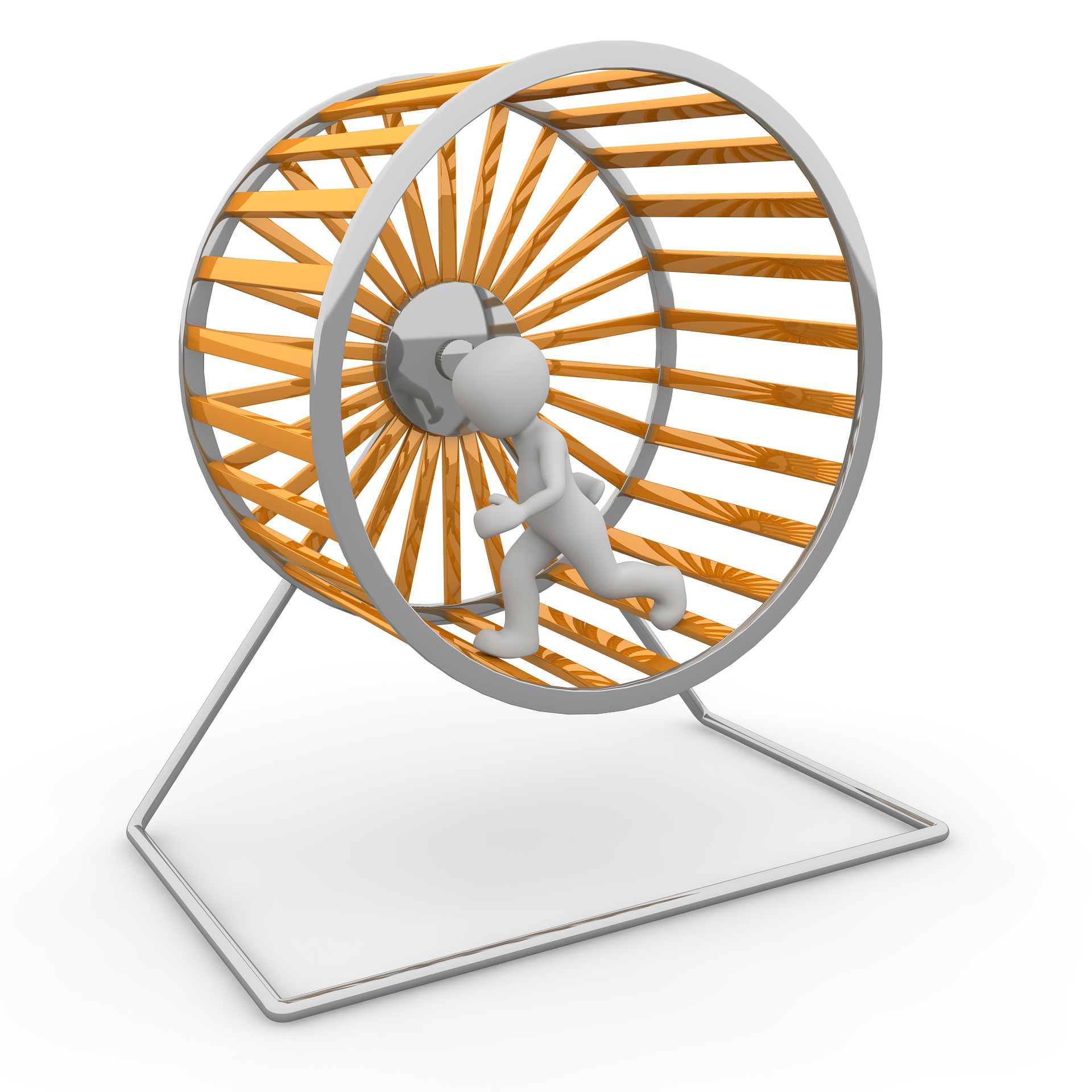5 Ways to Battle OCD

Obsessive Compulsive Disorder, or OCD, is an anxiety disorder characterized by ruminating thoughts and behaviors that you cannot escape. OCD likely feels like getting stuck in a hamster wheel of urges and thoughts.
The harder you try to get away, the faster the wheel goes until you give into your urges so that you can gain a brief minute of piece.
Obsessions vs. Compulsions.
- Obsession are thoughts and urges.
- Compulsions are actions done to relieve those thoughts or urges.
You can have obsessions without compulsions, but you are unlikely to have a compulsion without an obsession. This is because compulsions are acts done to try to diminish the obsessive thoughts.
For example, if you are obsessed with cleanliness and afraid of contamination, you may excessively wash your hands to get rid of the germs that you fear.

The 5 Categories of OCD
As a general rule, most of those who live with OCD will fall into one of four different categories.
It is useful to know what category you fall into because it will give you insight into your anxiety. And the more you know about your anxiety, the better equipped you are to manage it.
Washer
fear of contamination, so excessively wash hands
Checker
fear of danger or harm so may excessively check for the stove to be off
Doubter
fear of something terrible happening so excessively make sure everything is in order
Counter
Often superstitious and will excessively line things up so that they are symmetrical to ensure nothing bad happens

Hoarder
Fear of something bad happening if they throw anything away so excessively keep things that they don’t need or use
5 Ways to Battle OCD
No matter your version of OCD, there are some things that you can do to help lessen its grip on you. They are simple, but not easy.
- Repeated Exposure: I know, this sounds like hell to you if you are someone who looks at a desk and sees pens not lined up correctly. You just know that if you could align all the pens in a row that your day will be much better. But that’s anxiety and habit telling you that. The truth of the matter is that pen alignment has as much to do with daily satisfaction as does eating an entire bag of chips has to do with weight loss. Small, repeated exposure to the situation that causes distress will actually begin to alleviate the distress over time. Walking into a room, looking at the unaligned pens, and choosing not to do anything about it will feel really uneasy at first, but allow that uneasiness in. Over time the uneasiness will diminish, your resilience will strengthen, and you will feel more empowered.
- Writing Down Obsessions: Yes, I know this seems counterintuitive. After all, won’t writing them down make it worse? Well, not really. Much like physical exposure, written exposure can also help ease the hold that obsessions and compulsions have on you. As you get urges, write them down along with the actions that you want to take to ease the urge. Repetition lessens the urge, so write down your obsession 50 times in a row. This will lessen its grip. Equally, writing takes a lot more mental work than just thinking, so simply writing your thoughts will help to diminish their power.
- Scheduling Worry Time: This may seem counterproductive. At first glance, it seems that we should try to avoid worry at all costs. But in reality, avoiding worry just makes the worry stronger. So instead of feeling bad about yourself because you can’t get your obsessive thoughts out of your head, schedule a worrying time. This will allow you to indulge in your thoughts at a specific time of the day, which in turn helps you to NOT indulge in your thoughts all day.
- Identify Your Triggers: Let’s face it. You can’t solve a problem if you don’t know what the problem is. When trying to battle your triggers, take some time to identify what they are first. Record a list of triggers you experience each day and the corresponding obsessions that they provoke. Keep a chart of the trigger and the level of intensity of anxiety that is provoked. For example, if you are afraid of contamination, touching a public doorknob might cause an anxiety level of 3, while sitting on a public toilet seat might spike your anxiety to a level 10. By keeping track of your triggers and their corresponding anxiety level and urges, you will be better prepared to curb your urges before they happen.
- Create a Fear Ladder: Exposure to triggers can work against us if we are not careful. It is best to start small and work your way up. Consider creating a fear ladder for each event that you would like to overcome. For example, driving to work without stopping to check if you hit someone. Organize the triggers along the way from the lowest intensity (1 or 2) to the highest intensity (10) and begin at the bottom. For example:

Additional Tips to Manage OCD
Lean into the Anxiety
It is normal for anxiety levels to increase as you are exposing yourself to a new way of doing something. Notice the anxiety. Remain curious about what it is telling you. There is always a story we are telling ourselves about what may or may not happen if we do or don’t indulge in our compulsions. By recognizing the story, we can better challenge it.
Practice
Repetition is the key to decreasing obsessive compulsive actions and thoughts. It is not likely to work the first time. You may decide that the anxiety you feel is not worth the benefit. That’s okay, but don’t stop practicing. Someday soon, you will be able to sit in that anxiety longer and longer until you don’t feel it much at all anymore.
Say it Out Loud
This one is simple but effective. When we say things out loud, they more easily commit to memory. So the next time you lock the door, say out loud “I just locked the door.” Then when you drive away from home, you will likely remember what you said, so even if the obsessive thought that you need to turn around and check is there, you can manage it by remembering the verbal words.
OCD is Manageable
Remember, OCD is one way that anxiety can manifest. If you live with OCD, you have probably felt all sorts of feelings, including irritation, overwhelm, rumination, and maybe even shame. But by understanding your OCD and utilizing strategies to manage it, you will begin to see symptom reduction and possibly even relief.

